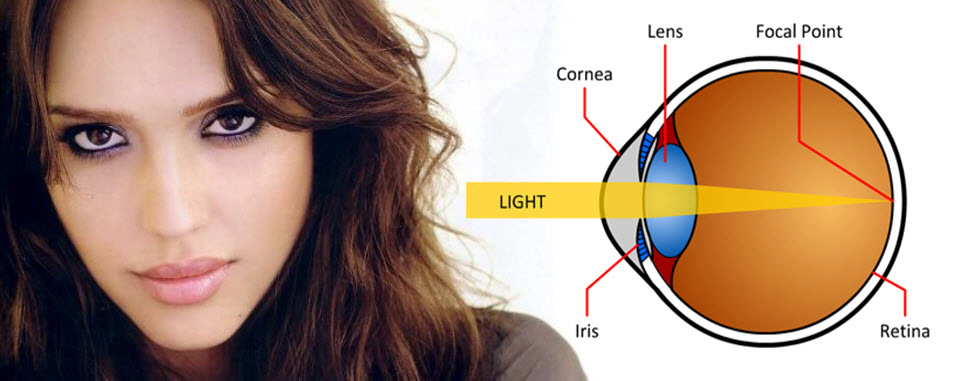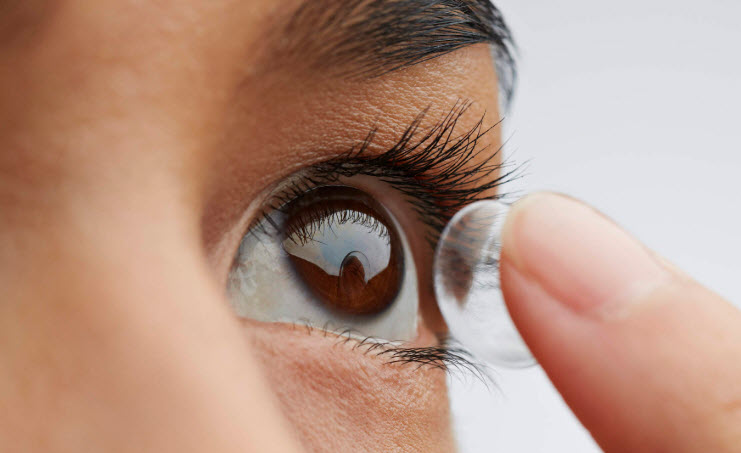The cornea is the transparent part of the eye through which you can see the iris and pupil. The outermost layer of the eye is composed of the sclera (white part of the eye) and the cornea. The outermost layer of the eye extends as the white sclera from behind the eye until the front of the eye where it becomes transparent and formed by the cornea. The cornea form one-sixth of the eye’s outer layer.
What’s the main function of the cornea?
The function of the cornea is to refract “bend” entering light rays to the eye to make them focused and forming images. Its power of focusing light rays (with the power of eye’s lens) determines where the light rays will be focused in the eye. The more the power, the shorter the distance in which light rays are focused.
The cornea contributes about two-thirds of the whole refractive power (ability to focus light rays) of the eye. The power of the cornea is not the same in all people, like those who are prescribed with monthly Biofinity lenses. When the power of the cornea increases, the distance in which it focuses light rays decreases. Normal corneal power focuses light rays on the retina. If the corneal power is more than normal, light rays are focused in front of the retina. If the cornea has less power than normal, light rays focused behind the retina.
The main factor that determines the refractive power amount of the cornea is its curvature.
– The cornea is curved in two perpendicular meridians. When the two meridians have different curvatures, the cornea takes the shape of the basketball. When the two meridians have the same curvature, the cornea takes round shape like the football and contact lenses that have marked down prices should be able to attach to it without issues.
– The more the curvature of the cornea, the more the power it has. Steeply-curved corneas refract light rays more and focus them in shorter distances than less curved corneas.
– When the two meridians of the cornea have the same curvature, they have the same refractive power. They focus light rays on the same plane in the eye. This happens in the normal eye, myopia, and hypermetropia like in the below image.

– When the curvature is different in the two corneal meridians, they have different refractive power from each other. So, they focus light rays into two different distances (planes) in the eye. This happens in astigmatism like in the image below.
 The cornea and the eye’s lens constitute all the refractive power of the eye. So, the location of the images in the eye is determined by the sum of the two powers.
The cornea and the eye’s lens constitute all the refractive power of the eye. So, the location of the images in the eye is determined by the sum of the two powers.
Facts about the cornea
– The cornea is the most sentient part of the body. It is innervated by dense nerve fibers. It is very sensitive to any approaching movement or object. Its nerves send signals to close the eyelids immediately if anything approaches.
– The cornea has no blood vessels. It gets nutrition and oxygen from the tears of the eye and the aqueous humor.
– The cornea is transparent because it has no blood vessels. Also, the nerve fibers in the cornea are demyelinated keeping it transparent.


 To help reshape a warped cornea or avoid a cornea becoming damaged:
To help reshape a warped cornea or avoid a cornea becoming damaged: